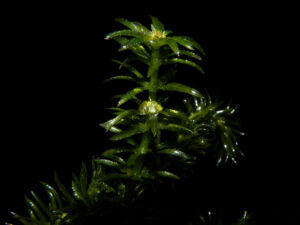Fixed plants are the aquatic plants to which the roots are attached or adhered to the mud or sand that is present in the bottom of the pond. Their roots are fixed to the base of the pond so they are called fixed plants.
Here are few examples of the fixed plant example
Before we get into the fixed plant example and their description, we need to know about the characteristics of fixed plant examples.
What are the features of fixed plant example?
- Fixed plants are the type of aquatic plants in which their root system is attached to the bottom of the water resource, preferably a pond and the other shoots are on the top of the water.
- The leaves of the fixed plant are very flat and disc in shape that is seen floating above the surface of the water.
- The stomata in the leaves are also seen visibly as they are present on the upper side.
- Fixed plant bodies are very light weight.
- The stem of the fixed plant is hollow and light so that they can float and they do not get damaged in the flowing water.
- The complete body of the fixed plant is so flexible that they do not get affected by the water current.
Now we will see about the fixed plant examples in detail.
Lotus:

Image credits- Pixabay
- Lotus is well known to each and every person especially in India as it is the “National flower of India”.
- The Kingdom to which the commonly known Lotus falls is Plantae
- The Division of the fixed plant – lotus, is Magnoliophyta.
- The Class of Lotus is Magnoliopsida.
- The lotus plant falls under the Order : Proteales.
- The Family name of the lotus plant is Nelumbonaceae.
- The Genus of lotus is Nelumbo.
- The Species of lotus plant is N. nucifera.
- Their Scientific Name is “Nelumbo nucifera”.
- They grow in different parts of India and they have their own trivial name based on the locality they are present in.
- The other alternative names for the lotus are Ambal, Thamarai, Suriya kamal, Padma, Ambuja, Pankaja, Blue Lotus, Indian Lotus, Sacred Water lily, bean of India, Kamala, Kanwal, Kamal.
- The leaves of the lotus plant are very flat and plane in shape that is seen floating above the surface of the water (Please refer to the image above).
- The stomata in the lotus are also seen visibly as they are present on the upper side(Please refer to the image above).
- Lotus flowers are very light weight and they are well known for their vibrant colour(Please refer to the image above).
- The stem of the lotus is fiber rich and hollow light in weight so that they can float and they do not get damaged in the flowing water(Please refer to the image above).
- The complete body of the lotus is so flexible that they do not get affected by the water current.
- The cultivation of lotus is with seeds that are sown on damp soil.
- They require at least 6 hours of sunlight for preventing freezing.
- “Nymphaea caerulea” is another species of Lotus plant.
Read More on Nucleotide Excision Repair and Single Nucleotide Polymorphism | An Important discussion
Water Lily:

Image credits- Wikimedia
- The water lily is usually rounded flowers with wax coated petals and leaves.
- The Kingdom of water lilies is Plantae.
- The group of water lilies is Tracheophytes.
- The Glade is Angiosperms for water lilies.
- The Order water lily plant is Nymphaeales.
- They fall under the Family of Nymphaeaceae.
- The Genus of water lily plant is Nymphaea.
- Their features are similar to that of lotus plants as they both fall under the fixed plant.
- The leaves of the water lily plant are very flat and plain in shape that is seen floating above the surface of the water (Please refer to the image above).
- The stomata in the water lily are also seen visibly as they are present on the upper side (Please refer to the image above).
- Water lily flowers are very light weight and they are well known for their vibrant color (Please refer to the image above).
- The stem of the Water lily is hollow and light in weight so that they can float and they do not get damaged in the flowing water (Please refer to the image above).
- The complete body of the Water lily is so flexible that they do not get affected by the water current.
Hydrilla:

Image credits- Flickr
- Hydrilla which is also called the “Water thyme“.
- They belong to the Kingdom– Plantae.
- The Clade is Tracheophytes.
- The Clade is Angiosperms.
- The Clade is Monocots.
- The Order is Alismatales.
- The Family of hydrilla is Hydrocharitaceae.
- The Genus of this plant is Hydrilla.
- The Species is Hydrilla verticillata.
- Hydrilla is a herbaceous perennial that has a stem upto 7 feet tall.
- Hydrilla appear in bushes and they have leaves which are usually stripe-like structures in shape (Please refer to the image above).
Read More on Difference between animal and plant cell chromosomes: Comparative analysis on structure, function and facts
What makes the fixed plants different from the floating plants?
- Fixed plants are the aquatic plants to which the roots are attached or adhered to the mud or sand that is present in the bottom of the pond.Their roots are fixed to the base of the pond so they are called fixed plants.
- Floating plants are the aquatic plants whose roots are not attached to the base of the soil, they just float on water.
- Example of floating plants: Duckweed.
Also Read:
- Parasitism examples
- Oxidoreductase enzyme example
- Centipede examples
- Errors in dna replication
- Aggregate fruit examples
- Genetic diversity examples
- Does algae have a nucleus
- When does cell division occur
- Mitosis
- Monounsaturated fat

Hello, I am Sugaprabha Prasath, a Postgraduate in the field of Microbiology. I am an active member of the Indian association of applied microbiology (IAAM). I have research experience in preclinical (Zebrafish), bacterial enzymology, and nanotechnology. I have published 2 research articles in an International journal and a few more are yet to be published, 2 sequences were submitted to NCBI-GENBANK. I am good at clearly explaining the concepts in biology at both basic and advanced levels. My area of specialization is biotechnology, microbiology, enzymology, molecular biology, and pharmacovigilance. Apart from academics, I love gardening and being with plants and animals.
My LinkedIn profile-